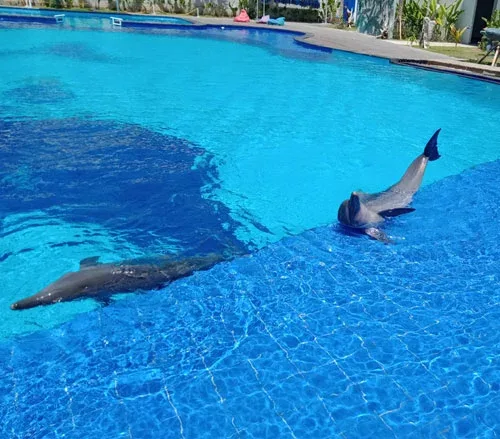Discovering the Seafood Menu: What Do Dolphins Eat?
Discovering the Seafood Menu: What Do Dolphins Eat? Dolphins – Fascinating and charming ocean dwellers who are always smiling and playing underwater. As one of the most intelligent marine animals, dolphins have a complex feeding pattern that influences how they interact with their environment, both with each other and with other species. They are charismatic creatures that have captured the imagination of humans for centuries, and their feeding patterns are a big part of their appeal.
A Diverse Seafood Menu
Dolphins are not picky, often adapting their diet to their specific environment. Although they prefer fish, they also enjoy squid and other invertebrates. As ocean predators, the dolphin’s seafood diet is very efficient at hunting, using sophisticated techniques to find and catch their prey.
What makes your diet so diverse? This is partly due to its geographic location. Dolphins living in cold waters tend to eat more fatty fish such as herring or mackerel, and dolphins in tropical areas eat more fish, including marine invertebrates such as squid and shrimp.
Knowing Your Dinner
Dolphins’ foraging prowess is due to their excellent echolocation sense. They emit a series of clicks that bounce off objects and back, allowing them to recognize and locate their prey in the water. Not only can they pinpoint the location of their prey, but they can also recognize its type and size, making sure it fits their appetite and feeding pattern.
In addition to echolocation, dolphins have excellent vision, both in and out of the water, which helps them in their foraging work. In low visibility conditions, they can use touch and vibration to find their prey.
Dolphin Hunting Techniques
It’s not enough to know where the food is; they also have to be able to catch it. This is where dolphins’ hunting skills really come into play. They are known for being cooperative hunters.
This means they will often work together to circle a group of fish, increasing their chances of successful feeding. A group of dolphins can even perform a “sweep” across the seabed, using their speed and agility to startle fish and drag them to the surface where they can be more easily secured.
Additionally, some dolphin species have developed unique hunting techniques, such as the fin slam or beach slam, where they hunt fish out of the water.
The Role of Dolphins in the Marine Ecosystem
Dolphins’ feeding patterns and feeding techniques have a major impact on the marine ecosystem. By eating fish and other invertebrates, dolphins play a vital role in controlling their populations. This has a ripple effect throughout the ecosystem, helping to maintain balance and increase biodiversity.
Pollution Concerns
Unfortunately, marine pollution is threatening the feeding patterns of some of these amazing animals. Dolphins are at the top of the marine food chain, absorbing and accumulating toxins from the animals they eat. This means they are at real risk of ingesting hazardous pollutants like mercury, plastics, and toxic chemicals that can affect their health.
In addition to this, conservation efforts are essential to protect dolphin communities and ensure that their seafood remains diverse and nutritious. The importance of dolphins in the marine food chain makes maintaining their health vital to the well-being of the entire marine ecosystem.
We hope this dolphin seafood Menu article has given you a better understanding of these marine creatures and how they relate to their environment. Now, as you watch dolphins happily leaping over the waves, you will have a greater appreciation for the incredible adaptability and skills that dolphins need to find their food.
